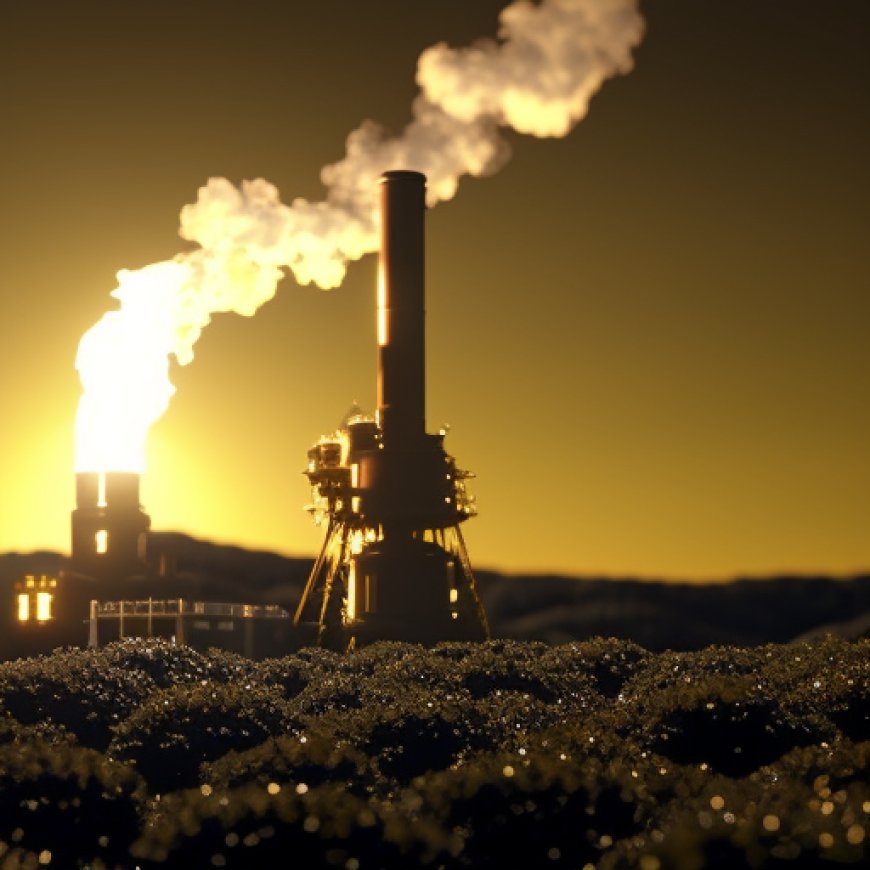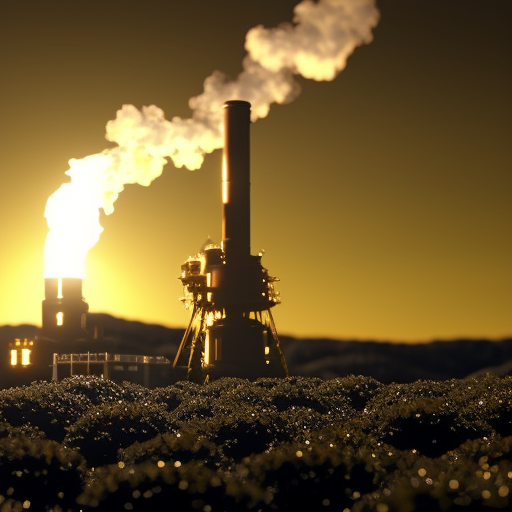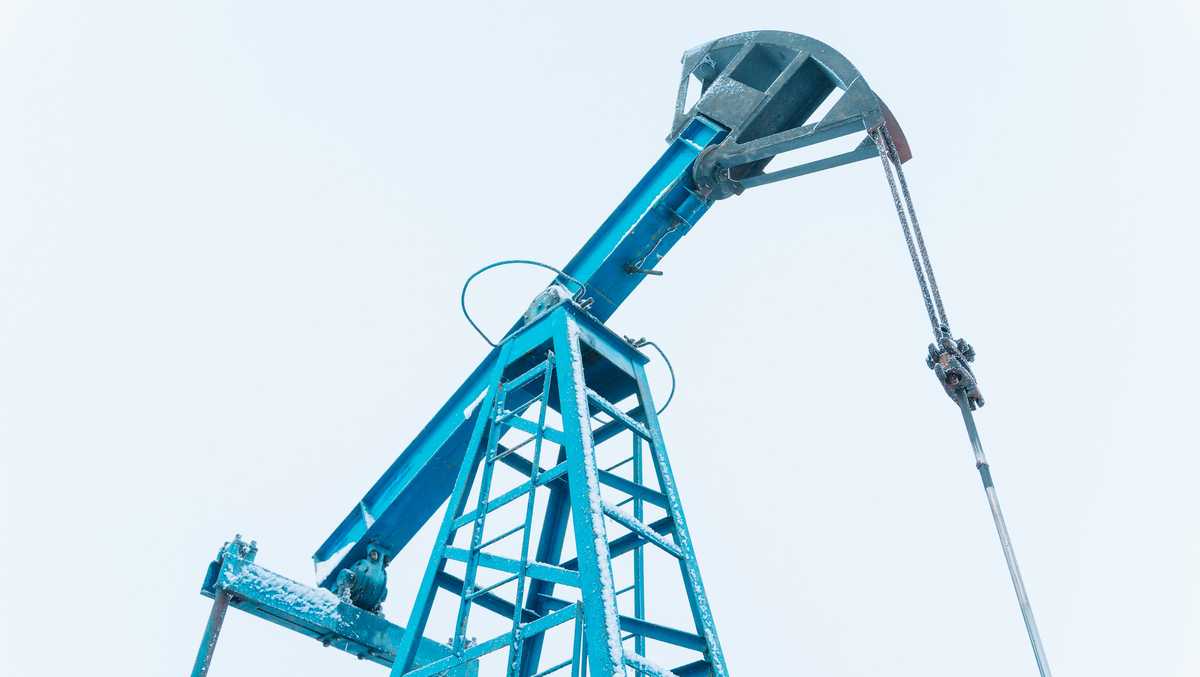Pennsylvania makes a push to attract and approve carbon capture wells
Pennsylvania makes a push to attract and approve carbon capture wells WTAE Pittsburgh


Pennsylvania State Senate Approves Legislation for Carbon Capture Projects

The Pennsylvania state Senate has recently approved legislation aimed at attracting carbon capture projects and enabling federally-funded hydrogen hubs in the state. However, critics argue that the bill lacks important safeguards.
Regulating Underground Wells for Carbon Capture
The Republican-penned bill provides a framework for regulating underground wells that store carbon dioxide, a critical component of carbon capture and removal technology. Supporters believe that carbon capture can help slow down climate change. The bill passed with a vote of 30-20 and will now move to the Democratic-controlled House of Representatives.
Building Hydrogen Hubs
Advocates of the bill argue that attracting carbon capture projects to Pennsylvania is crucial for the development of two hydrogen hubs recently awarded by the Biden administration. One hub will focus on energy-producing sites in southwestern Pennsylvania, while the other will be based around sites in the Philadelphia region.
Securing Pennsylvania’s Future
Republican Sen. Gene Yaw, the sponsor of the bill, stated that it is a proactive step to secure Pennsylvania’s future as a hub for carbon capture and sequestration. He emphasized that the bill offers a pragmatic solution to reducing carbon emissions without compromising the reliability of the electric grid.
Hydrogen Fuel and Climate Change
The two hydrogen hubs are part of a $7 billion federal program aimed at promoting the development and production of hydrogen fuel. Hydrogen fuel is a key component of President Joe Biden’s agenda to combat climate change by replacing fossil fuels with cleaner alternatives.
Potential Benefits of Carbon Capture
Carbon capture involves capturing greenhouse gases emitted from coal or gas-powered plants and injecting them into underground wells. This process can make energy production more climate-friendly, as the captured gases can be used to produce hydrogen fuel. Pennsylvania has the potential to store approximately 2.4 billion metric tons of carbon dioxide underground, which is equivalent to the annual emissions of 500 million gas-powered vehicles.
Concerns and Opposition
Opponents of the bill argue that it lacks important protections. They express concerns about companies’ liability for leaks or water contamination, the potential for landowners to be forced into contracts with well operators, and the adequacy of state staff to enforce regulations. Additionally, critics warn that carbon capture wells may lead to the construction of pipelines across the state, potentially disrupting populated communities.
Debate on Carbon Capture as a Climate Solution
Skeptics argue that carbon capture has been oversold as a climate change solution and will only prolong the lifespan of the fossil fuel industry. Democratic Sen. Katie Muth stated during the floor debate that while climate solutions are necessary, capturing carbon cannot be the centerpiece of any serious climate plan.
State Control of Permitting
Democratic Gov. Josh Shapiro’s administration intends to apply to the U.S. Environmental Protection Agency (EPA) to take over issuing permits for wells that store carbon. This move aims to expedite the approval process for new projects that are crucial for reducing greenhouse gas emissions. Currently, the EPA is responsible for permitting carbon storage wells in all but three states.
Federal Support and Limited Project Implementation
The Biden administration has increased tax breaks for developers of carbon capture projects and provided substantial grants. However, despite the influx of permit applications, only a few carbon capture projects are currently operating, and few wells have been approved so far.
SDGs, Targets, and Indicators
-
SDG 7: Affordable and Clean Energy
- Target 7.2: Increase substantially the share of renewable energy in the global energy mix
- Indicator: Proportion of total energy consumption from renewable sources
-
SDG 13: Climate Action
- Target 13.1: Strengthen resilience and adaptive capacity to climate-related hazards and natural disasters
- Indicator: Number of deaths, missing persons, and directly affected persons attributed to disasters per 100,000 population
- Target 13.2: Integrate climate change measures into national policies, strategies, and planning
- Indicator: Number of countries that have communicated the strengthening of institutional, systemic, and individual capacity-building to implement adaptation, mitigation, and technology transfer
- Target 13.3: Improve education, awareness-raising, and human and institutional capacity on climate change mitigation, adaptation, impact reduction, and early warning
- Indicator: Number of countries that have integrated mitigation, adaptation, impact reduction, and early warning into primary, secondary, and tertiary curricula
-
SDG 15: Life on Land
- Target 15.2: Promote the implementation of sustainable management of all types of forests, halt deforestation, restore degraded forests, and substantially increase afforestation and reforestation globally
- Indicator: Proportion of important sites for terrestrial and freshwater biodiversity that are covered by protected areas, by ecosystem type
Table: SDGs, Targets, and Indicators
| SDGs | Targets | Indicators |
|---|---|---|
| SDG 7: Affordable and Clean Energy | Target 7.2: Increase substantially the share of renewable energy in the global energy mix | Proportion of total energy consumption from renewable sources |
| SDG 13: Climate Action | Target 13.1: Strengthen resilience and adaptive capacity to climate-related hazards and natural disasters | Number of deaths, missing persons, and directly affected persons attributed to disasters per 100,000 population |
| Target 13.2: Integrate climate change measures into national policies, strategies, and planning | Number of countries that have communicated the strengthening of institutional, systemic, and individual capacity-building to implement adaptation, mitigation, and technology transfer | |
| Target 13.3: Improve education, awareness-raising, and human and institutional capacity on climate change mitigation, adaptation, impact reduction, and early warning | Number of countries that have integrated mitigation, adaptation, impact reduction, and early warning into primary, secondary, and tertiary curricula | |
| SDG 15: Life on Land | Target 15.2: Promote the implementation of sustainable management of all types of forests, halt deforestation, restore degraded forests, and substantially increase afforestation and reforestation globally | Proportion of important sites for terrestrial and freshwater biodiversity that are covered by protected areas, by ecosystem type |
Analysis
The issues highlighted in the article are connected to multiple Sustainable Development Goals (SDGs). The relevant SDGs include SDG 7: Affordable and Clean Energy, SDG 13: Climate Action, and SDG 15: Life on Land.
Based on the article’s content, specific targets under these SDGs can be identified:
- Under SDG 7, the specific target is to increase substantially the share of renewable energy in the global energy mix (Target 7.2).
- Under SDG 13, there are three specific targets: strengthen resilience and adaptive capacity to climate-related hazards and natural disasters (Target 13.1), integrate climate change measures into national policies, strategies, and planning (Target 13.2), and improve education, awareness-raising, and human and institutional capacity on climate change mitigation, adaptation, impact reduction, and early warning (Target 13.3).
- Under SDG 15, the specific target is to promote the implementation of sustainable management of all types of forests, halt deforestation, restore degraded forests, and substantially increase afforestation and reforestation globally (Target 15.2).
The article mentions or implies several indicators that can be used to measure progress towards the identified targets:
- For SDG 7, the indicator is the proportion of total energy consumption from renewable sources.
- For SDG 13, the indicators include the number of deaths, missing persons, and directly affected persons attributed to disasters per 100,000 population; the number of countries that have communicated the strengthening of institutional, systemic, and individual capacity-building to implement adaptation, mitigation, and technology transfer; and the number of countries that have integrated mitigation, adaptation, impact reduction, and early warning into primary, secondary, and tertiary curricula.
- For SDG 15, the indicator is the proportion of important sites for terrestrial and freshwater biodiversity that are covered by protected areas, by ecosystem type.
Overall, the article highlights the importance of carbon capture projects and hydrogen hubs in Pennsylvania for addressing climate change and transitioning to cleaner energy sources. However, it also raises concerns about the lack of safeguards and potential negative impacts on communities and the fossil fuel industry.
Behold! This splendid article springs forth from the wellspring of knowledge, shaped by a wondrous proprietary AI technology that delved into a vast ocean of data, illuminating the path towards the Sustainable Development Goals. Remember that all rights are reserved by SDG Investors LLC, empowering us to champion progress together.
Source: wtae.com

Join us, as fellow seekers of change, on a transformative journey at https://sdgtalks.ai/welcome, where you can become a member and actively contribute to shaping a brighter future.







